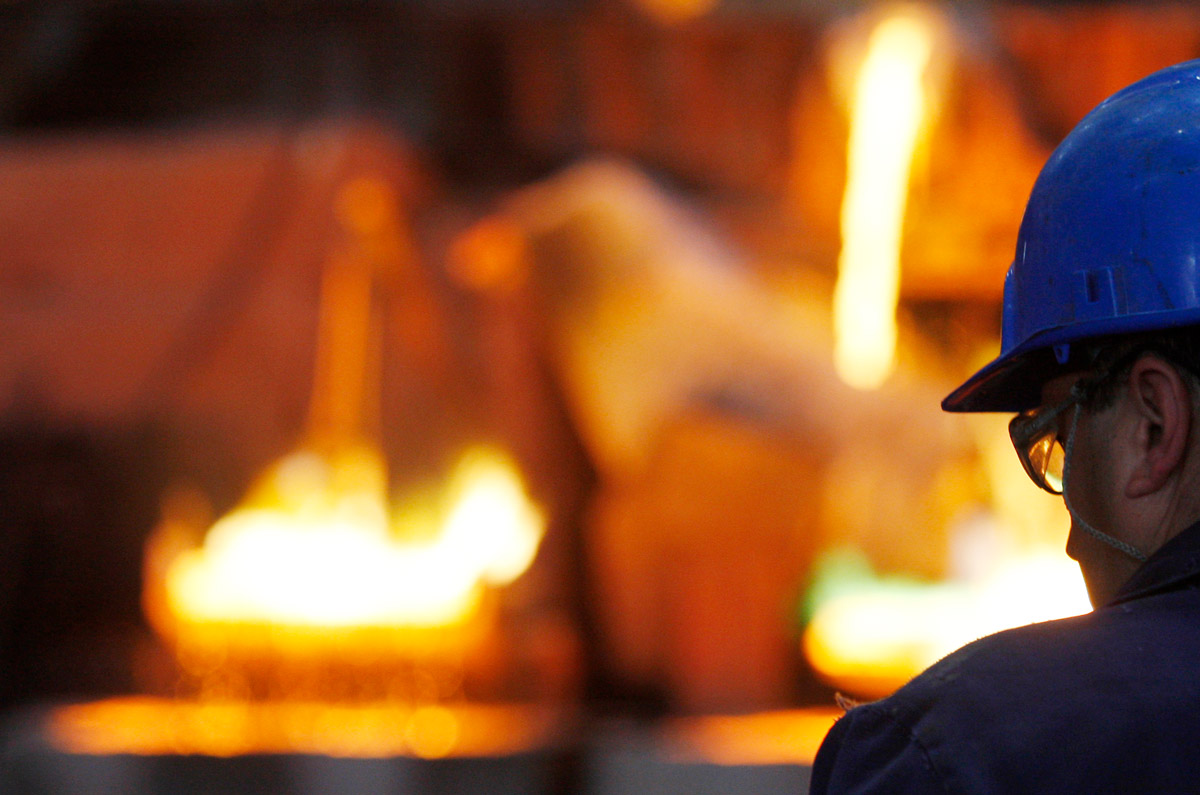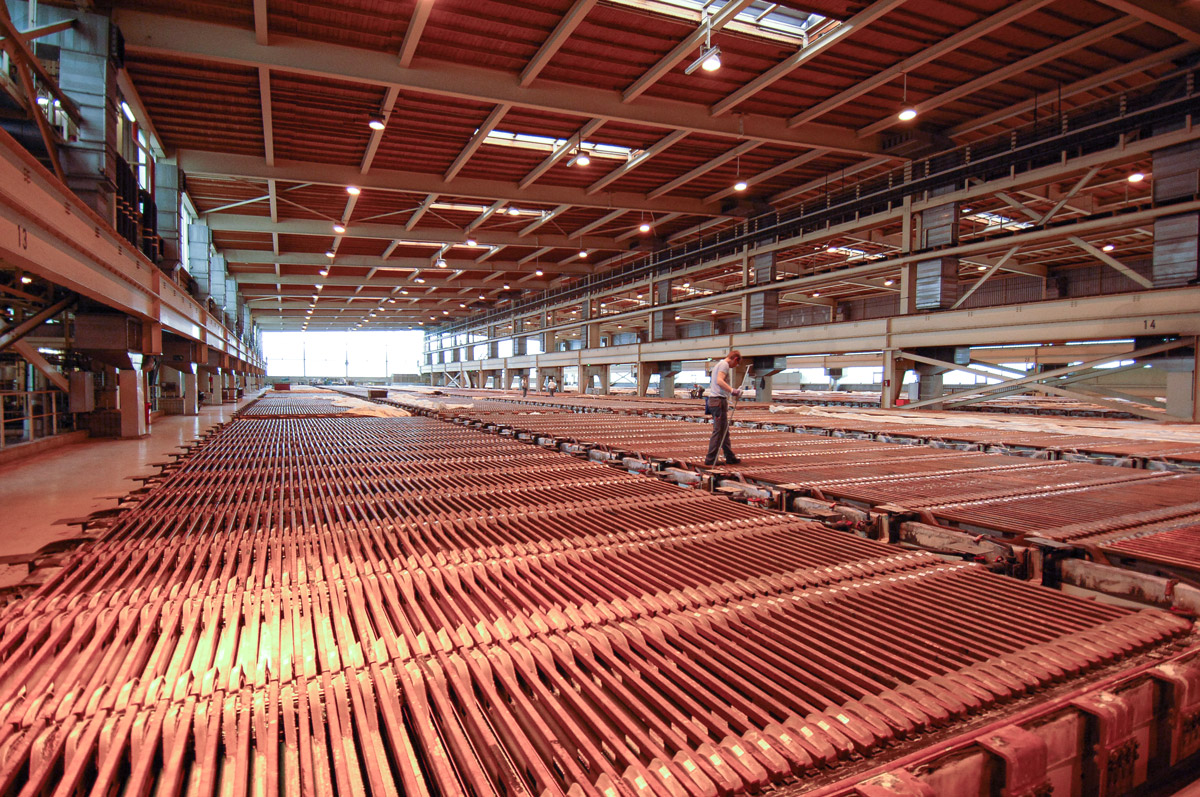Refining
Copper is refined either by electrolysis or in the melt flow.
Fire refining is increasingly being pushed back by electrolytic refining. Only about 10 % of the copper is refined in the melt flow. However, electrolytic refining is always preceded by fire refining in order to remove as many impurities as possible in this stage and thus relieve the electrolysis. In addition, this pre-refining in the melt flow has the purpose of removing the elements sulphur and oxygen, which are abundant in blister copper, to such an extent that they do not interfere with the electrolytic refining.
Fire refining
Fire refining is used both in primary copper extraction and in secondary copper extraction (recycling). In this process, copper impurities are converted into an oxidic form by selective oxidation at high temperatures and extracted as slag. Depending on whether fire refining is based on solid starting materials – blister copper in solidified form or scrap – or liquid blister copper, a distinction must be made between two cases:
- Remelting in the flame furnace (ASARCO furnace) and subsequent “polishing” in the rotary furnace.
- “Polishing” of liquid blister copper in the rotary furnace (anode furnace).
In the so-called oxidation period, the copper is brought to a high oxygen content by exposure to flames with excess air. This oxidises most of the impurities. In blister copper, the sulphur content is reduced. The oxidised impurities float as slag on the surface of the bath and are drawn off. This slag contains copper and is reused in the metal smelter.
The high oxygen content of the copper (about 1 %) created in the oxidation period must be lowered again in the subsequent reduction period (poles) in the anode furnace by reducing agents. Whereas in the past fresh beech or birch logs were placed in the liquid metal covered with coke breeze or burnt-out charcoal for “poling”, today natural gas, propane, naphtha, reforming gas or ammonia are mainly used as reducing agents. Through the formation of volatile organic compounds in the reducing agents, the copper(I) oxide is reduced to copper with the formation of water vapour and carbon dioxide and brought to the ready-to-cast state.
The “fire-refined”, tough-pole copper still contains small amounts of oxygen. This low oxygen content in the tough-poled copper is necessary and prevents hydrogen absorption. It therefore counteracts the formation of shrinkage cavities in the castings during solidification and renders easily oxidisable impurities, which could impair the properties of the solid, harmless by converting them into their oxides.
Some of the copper is cast in a continuous casting plant into “shapes” such as round billets, rolled plates and notched blocks, but most of it is cast into anodes in the copper smelter. Most anodes are cast on large rotating anode casting wheels into 20-30 open moulds. Meanwhile, in a more modern process, the anode sheets are cast in a gap between two water-cooled steel strips and continuously cut out of the strip with a plasma torch. For the subsequent electrolytic refining, good flatness and high weight consistency are required from the anodes.

Electrolytic refining
Electrolysis is used for the purification (refining) of metals on an industrial scale. For electrolytic refining, the anode plates cast from impure copper and thin cathode starter plates or permanent cathodes made of stainless steel are hung next to each other in the electrolysis baths filled with copper sulphate solution. The electric current causes the copper to dissolve at the anodes and to be deposited at the cathodes as a very pure metal. Of the impurities in the anode copper, less noble elements are dissolved anodically but are not deposited at the cathode (e.g. nickel, arsenic), while other noble elements such as gold, silver, platinum or such elements as lead or selenium, which form insoluble compounds, are not dissolved at the anode but sink to the bottom as sludge and are then recovered from this “anode sludge”.
The cathode is the basic product of copper for high-value applications. In the form of the cathode, pure copper separates from raw copper during the electrolytic refining process. Copper cathodes with certain maximum impurity levels are also registered and traded on the “London Metal Exchange” and the “Comex”. High-quality copper is characterised by the lowest impurity content, as even the smallest amounts of selenium, bismuth or antimony in the ppm range have a strong influence on conductivity.
The extraction of precious metals is a significant part of the economic efficiency of electrolysis. The cathode plates obtained during electrolytic refining are remelted and cast into formats for the production of semi-finished products.

Are you looking for a different content?